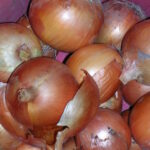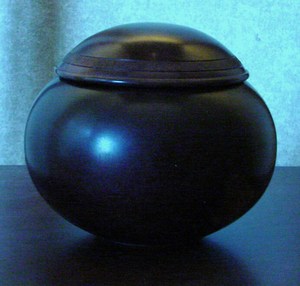The other night, while sitting around the kitchen table, raccoons, squirrels and skunks came up in the conversation. Someone said they’d had a problem with skunks homesteading under their house. They trapped them and hauled them out into the countryside only to have them show up again in a week or so. We’d had a similar problem with skunks when living in NE Oregon some years before.
We’d bought an A frame that the previous owners only used as a summer retreat cabin. Since they weren’t there very often, the local fauna had decided it was their territory and moved in. Raccoons considered the tool shed and back yard their home and a skunk, or maybe two, had decided the crawl space under the house was the perfect place for them.
Not long after moving in, something aroused the resident skunk and we were instantly wide awake. Our bedroom was on the second story but whatever had gotten the skunks ire must have been sufficiently big or threatening to warrant the maximum. Large scale, close range skunk, makes my throat sore, as well as my eyes water and escape a necessity. After that experience, finding a way to eliminate our downstairs tenant went from somewhere in the to do list to the very top, and in bold print.
Shooting or trapping it would, in all likelihood, cause another reaction from the skunk and once was enough. Besides, if they moved back in in a couple of weeks, I’d have to do it all over again. I talked to some of the old-timers who’d lived in the area to see if they had any suggestions. Leaving a light on where the skunk slept came up more than once, so I decided to give it a try.
Proceeding carefully, to be sure the skunk wasn’t at home, I crawled under the house with as many droplights as I could come up with. It wasn’t hard to find where the skunk had chosen to sleep, I only had to follow my nose. By using multiple lights, it was possible to leave no corners unlit. I left the lights on day and night for about a week and we never had a problem after that. I saw a skunk wandering around in the yard a couple of times but it never went under the house.
One skunk and I became close friends, with a couple of good skunk videos being the result. One day, I saw the skunk walking along the edge of an irrigation canal that bordered our property. With video camera in hand, I went a hundred yards or so up the canal in the direction the skunks was going and, lying on my stomach with the camera in front of me, I waited. It wasn’t long before the skunk came around the corner and walked straight towards me. It sniffed the camera’s lens, leaving little skunk nose prints, and then sniffed my cheek and ear before continuing on its way. It didn’t appear afraid of me and I didn’t move a muscle until certain I was out of firing range. I got a couple other videos, but nothing that close, or as spine tingling, as that one A week or so later I saw the same skunk walking across the back of our property. Hoping for another close encounter, I got out my camera and walked up to where it was digging for dinner. It saw me coming and began walking away. I followed with camera running. When I got too close the skunk began stomping its feet and looking over its shoulder. I pressed my luck a little and then the skunk turned toward me, stomped its feet then raised its tail. I conceded the game and, leaving the skunk to its foraging, I went home to see what kind of footage I’d gotten.
When we were in Eugene putting the finishing touches on our motorhome, my son told me the following trick that had worked and saved him money. He sprinkled baking soda on the peak of his roof and let the rainwater wash it down into the gutters. On its way, the baking soda killed all the moss on the roof, including below the chimney where moss and black soot had accumulated. He had to do below the chimney twice to get the area as clean and white as the rest. The roof is back to the original color, is clean and looks good. Baking soda is a lot less expensive than the chemical alternatives, isn’t an environmentally toxic material and is non-corrosive to the roofing material.
Reference:
- Various Larry R. Miller articles on Associated Content.
- www.associatedcontent.com/article/1100499/new_02_sensor_failure_.html?cat=27
- www.associatedcontent.com/article/1505080/toothpaste_the_answer_to_oxidized_paint.htm




